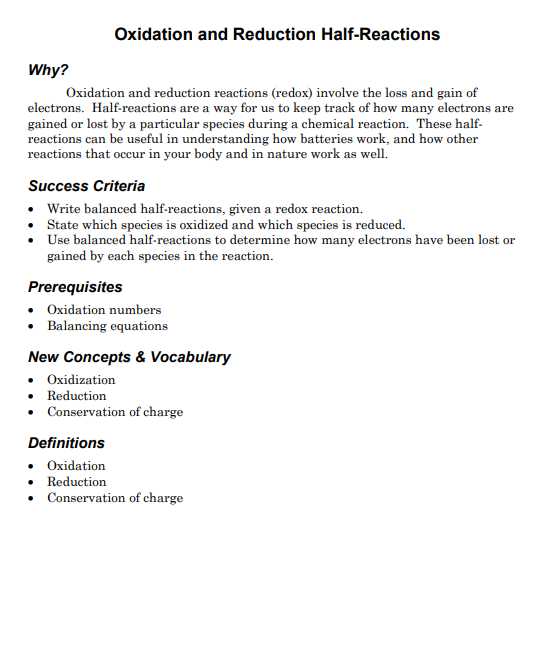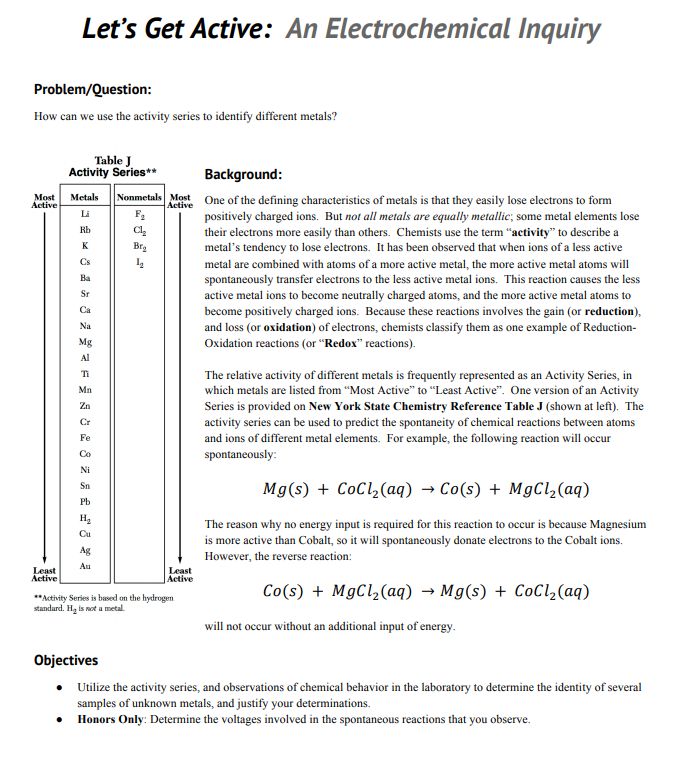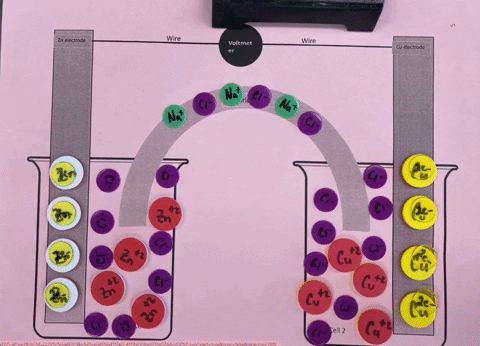Sample Inquiry/Flipped NYSSLS/NGSS Unit: Electrochemistry
Background: New York implemented a revised version of NGSS called NYSSLS which includes redox and electrochemistry. I currently follow the modeling chemistry curriculum (see NYSSLS/NGSS units) which covers redox earlier in the year. In this unit on electrochemistry, students already have prior knowledge on oxidation numbers and writing half reactions.
Inquiry/Flipped Learning: Each lesson involves students constructing knowledge/models first followed by the flipped video instruction which fills in the gaps in their understanding and introduces key vocabulary. This is followed by practice problems where students apply their knowledge.
|
Anchoring Phenomenon: Potato Clock
Period 1: Using QFT students generate as many questions as they can about how a potato clock produces electricity. Students seek to answer these questions as they engage in each lessson.
|
|
Period 2:
Balancing redox reactions POGIL (Click here for a Copy). Students develop an understanding of how to balance redox reactions through the use of models. HW: Balancing redox reactions video Students further develop their understanding of balancing redox reactions. |
Period 3:
Students apply their understanding to various problems by working collaboratively (click here for a copy)
Students apply their understanding to various problems by working collaboratively (click here for a copy)
|
Period 4: Spontaneous Reactions and the activity series (click here for a copy) Students will use the activity series (Table J) to determine the identity of different metals. HW: Spontaneous reactions and Table J Students further develop their understanding of spontaneous reactions and the activity series Table J. |
Period 5:
Students apply their understanding to various problems by working collaboratively (click here for a copy)
Students apply their understanding to various problems by working collaboratively (click here for a copy)
|
Period 6:
Voltaic Cell simulation: (click here for a copy) Student make a model of a voltaic cell to determine how it functions to produce electricity. HW: Voltaic Cells Students will further develop their understanding of how voltaic cells work and learn necessary vocabulary. |
Period 7:
Students apply their understanding to various problems by working collaboratively (Click here for a copy)
Students apply their understanding to various problems by working collaboratively (Click here for a copy)
|
Period 8:
Electrolytic Cell Simulation: (Click here for a copy) Student make a model of an electrolytic cell to understand how electroplating works and determine the differences between a voltaic and electrolytic cell. HW: electrolytic cells Students will learn about different types of electrolytic cells as well as the necessary vocabulary. |
Period 9:
Students apply their understanding to various problems by working collaboratively (Click here for a copy)
Students apply their understanding to various problems by working collaboratively (Click here for a copy)
Period 10: Assessment of anchoring phenomenon
Students make a model of the potato clock to explain how it functions and answer their QFT driving questions.
Students make a model of the potato clock to explain how it functions and answer their QFT driving questions.









